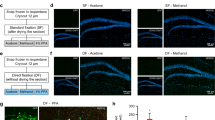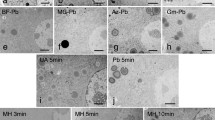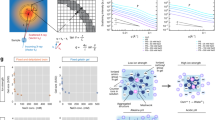Abstract
OBSERVATIONS by several investigators during the past few years lend support to the view that the Golgi substance is present in living cells in the form of droplets stainable supra-vitally with certain vital dyes1–4. The classical form of the Golgi substance has been considered to be a gross artefact induced by the development of myelin figures from droplets of phospholipid3,4. This view has been accepted by some5–7 and questioned by others8,9. It was felt that observations with the electron microscope might aid in the elucidation of this complex problem. With this possibility in mind, liver and intestinal epithelium were fixed by perfusion in two different fixatives, one the Kolatchev–Nassonov modification of Champy's fluid10 and the other a mixture of equal parts of 2 per cent osmic acid, 3 per cent potassium dichromate and 2 per cent lanthanum nitrate. The pH of the former fixative is 2.0 and that of the latter is 3.4. After fixation, slices of tissue were transferred to the same fixative for varying lengths of time. Both tissues were examined during the period of fixation with oil immersion at a thousand diameters by crushing the tissues under a coverslip in water or glycerine. Neither myelin figures nor the Golgi substance could be identified during the first twenty-four hours with the osmic acid, potassium dichromate, lanthanum nitrate mixture, nor during the first forty-eight hours fixation with modified Champy's fluid. Further treatment with 2 per cent osmic acid for three days at 37° C. resulted in the appearance of the Golgi substance with its typical form and distribution throughout both tissues after fixation in modified Champy's fluid but not after fixation in the osmic, dichromate, lanthanum mixture. Secondary treatment of the tissues preserved in the latter fixative with a mixture of equal parts of 3 per cent potassium dichromate and 1 per cent chromic acid followed by treatment with 2 per cent osmic acid for four days at 37° C. resulted in the development of faint positive images of the Golgi substance, whereas secondary treatment with modified Champy's fluid for twenty-four hours followed by treatment with 2 per cent osmic acid at 37° C. for four days resulted in the development of typical, well-blackened Golgi figures in both tissues.
This is a preview of subscription content, access via your institution
Access options
Subscribe to this journal
Receive 51 print issues and online access
$199.00 per year
only $3.90 per issue
Buy this article
- Purchase on Springer Link
- Instant access to full article PDF
Prices may be subject to local taxes which are calculated during checkout
Similar content being viewed by others
References
Worley, L. G., Ann. N.Y. Acad. Sci., 47 (1946).
Baker, J. R., Quart. J. Microscop. Sci., 90 (1949).
Palade, G. E., and Claude, A., J. Morph., 85 (1949).
Palade, G. E., and Claude, A., J. Morph., 85 (1949).
Baker, J. R., Nature, 165 (1950).
Bourne, G. H., Nature, 166 (1950).
Xeros, N., Nature, 167 (1951).
Gatenby, J. B., Nature, 167 (1951).
Bensley, R. R., Exp. Cell. Res., 2 (1951).
Nassonov, D., Arch. mikr. Anat., 97 (1923).
Author information
Authors and Affiliations
Rights and permissions
About this article
Cite this article
DALTON, A. Observations of the Golgi Substance with the Electron Microscope. Nature 168, 244–245 (1951). https://doi.org/10.1038/168244b0
Issue Date:
DOI: https://doi.org/10.1038/168244b0
This article is cited by
-
Cytochemical studies on the internal polarity of the golgi apparatus and the relationship between this organelle and GERL
Histochemistry (1981)
-
Die Golgiapparate lebender Pflanzenzellen im Lichtmikroskop
Protoplasma (1962)
-
Die Ultrastruktur von Wurzelmeristemzellen der Erbse (Pisum sativum)
Protoplasma (1958)
-
The Golgi Apparatus and the Electron Microscope
Nature (1956)
-
The ‘Golgi Substance’
Nature (1951)
Comments
By submitting a comment you agree to abide by our Terms and Community Guidelines. If you find something abusive or that does not comply with our terms or guidelines please flag it as inappropriate.



